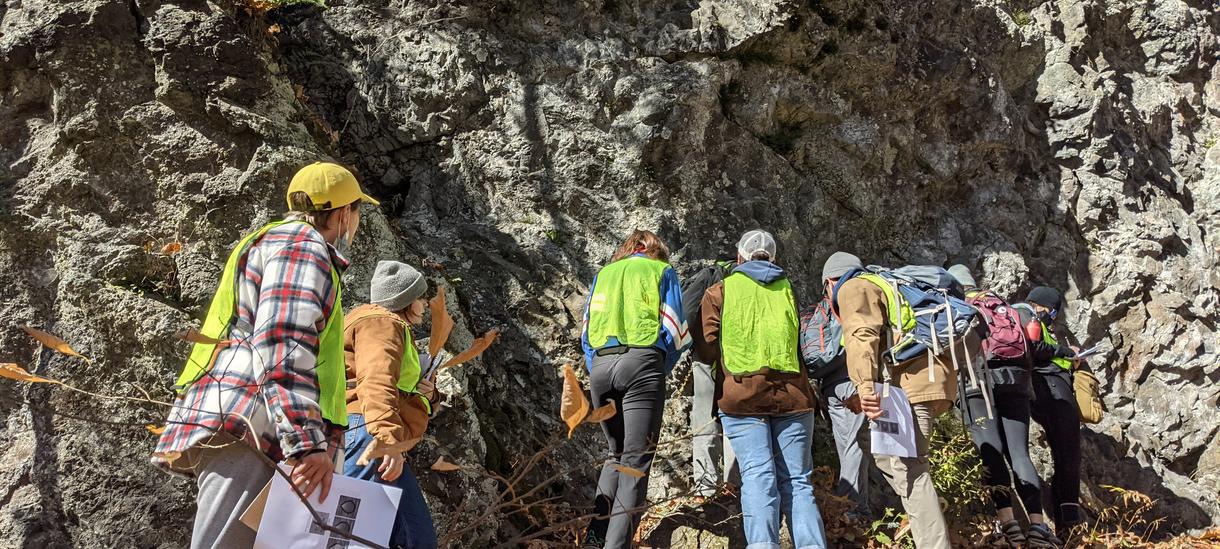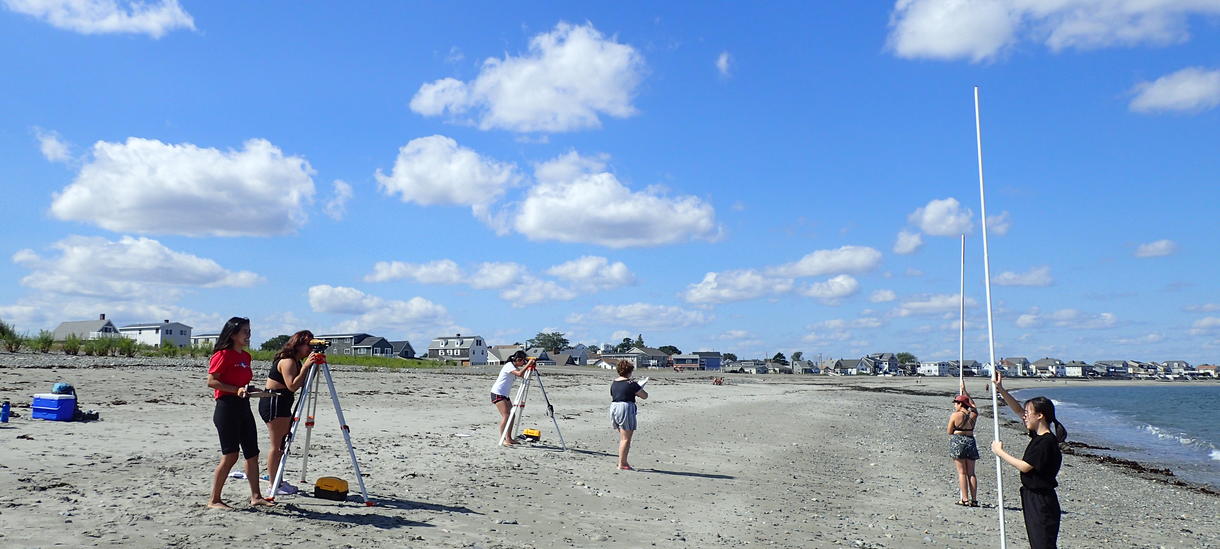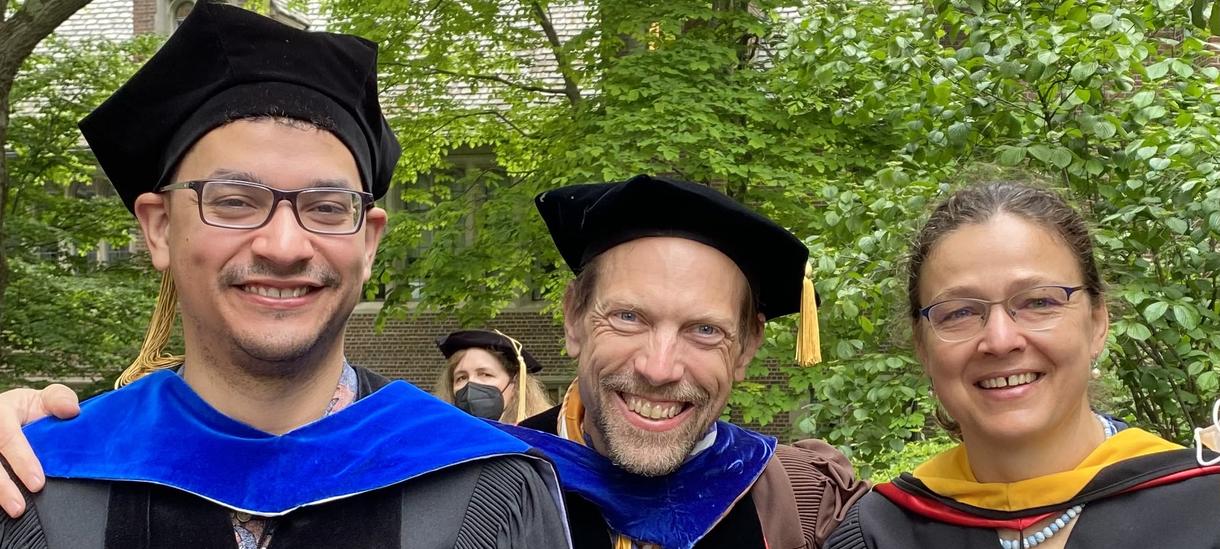Faculty Research
Faculty Research
Professor Dan Brabander (Professor of Geosciences) is an urban environmental geochemist with research interests at the intersection of public health and earth materials (GeoHealth). Professor Brabander’s research team comprises undergraduates learning science by doing science, community scientists, and not-for-profit organizations. Projects have been featured in numerous media outlets including NPR, ABC news, the Boston Globe, and Time Magazine. His current research focus is environmental geochemistry, geohealth, and sustainable urban agriculture.
Links: djb_lab || Lab Instagram || Google Scholar profile
Selected Publications (*Wellesley student researcher):
Hayhow C. M. *, Brabander D., Jim R., Lively M., Filippelli G. M. (2021) Addressing the need for just GeoHealth engagement: Evolving models for actionable research that transform communities. AGU GeoHealth 5 (12) 25 November 2021 https://doi.org/10.1029/2021GH000496
Gallagher C. L. *, Oettgen H. L. *, Brabander D. J. (2020) Beyond community gardens: A participatory research study evaluating nutrient and lead profiles of urban harvested fruit. Elementa: Science of the Anthropocene (2020) 8 (1): 004. https://doi.org/10.1525/elementa.2020.004
Smith J. P., Brabander D. J., Panek, L. A., Besancon J. R. (2019) Enrichment of potentially toxic elements in the fine fraction of soils from Iraq and Kuwait. Journal of Soils and Sediments. https://doi.org/10.1007/s11368-019-02286-7
Howard M.*, Plotkin A.*, McClure A. R.*, Klepac-Ceraj V., Griffith A., Brabander D., Jones K. (2018) Comfrey mulch enriches soil, but does not improve an indicator crop within one season. International Journal of Plant and Soil 22: (2) 1-9. doi : 10.9734/IJPSS/2018/40403.
Monecke K., McCarthy F. G., Hubeny B., Ebel J. E., Brabander D. J., Kielb S., Howey E.*, Janigian G.*, Pentesco J. (2018) The 1755 Cape Ann earthquake recorded in lake sediments of eastern New England: An interdisciplinary paleoseismic approach. Seismological Research Letters. https://doi.org/10.1785/0220170220.
Sharp R. M.* and Brabander, D. J. (2017). Lead (Pb) bioaccessibility and mobility assessment of urban soils and composts: Fingerprinting sources and refining risks to support urban agriculture. GeoHealth, 1, 333–345. https://doi.org/10.1002/2017GH000093.
Fitzstevens M. G.*, Sharp R. M.*, Brabander D. J. (2017) Biogeochemical characterization of municipal compost to support urban agriculture and limit childhood lead exposure from resuspended urban soils. Elem Sci Anth. 2017; 5:51. doi http://doi.org/10.1525/elementa.238.
Professor Adrian Castro (Assistant Professor of Geosciences) is a metamorphic petrologist and geochemist interested in metamorphic phase equilibria, chemical kinetics, convergent tectonics, and subduction zone dynamics. Essentially, he is interested in how mountains are formed and how the materials that make up the crust are recycled back into the Earth.
Links: Personal website || Lab Instagram
Selected Publications:
Kohn, M. J., Castro, A. E., Kerswell, B. C., Ranero, C. R., & Spear, F. S. (2018). Shear heating reconciles thermal models with the metamorphic rock record of subduction. Proceedings of the National Academy of Sciences, 115(46), 11706-11711.
Castro, A. E., & Spear, F. S. (2017). Reaction overstepping and re-evaluation of peak P‒T conditions of the blueschist unit Sifnos, Greece: implications for the Cyclades subduction zone. International Geology Review, 59(5-6), 548-562.
Professor Elizabeth Davis (Lecturer in Geosciences & Environmental Studies) is a paleoclimatologist who works with sedimentological and geochemical methods to study Earth’s past climate change, with a particular interest in Antarctica’s ice sheet history. She applies geochronology and radiogenic isotopes in minerals and bulk sediments from marine sediment samples to constrain the subglacial geology of Antarctica and then uses this geological information to determine the location of paleo-iceberg discharges from the Antarctic Ice Sheet over time.
Links: Google Scholar profile
Selected Publications:
Pierce, E.L., van de Flierdt, T., Williams, T., Hemming, S.R., Cook, C.P., Passchier, S. (2017) Evidence for a dynamic East Antarctic Ice Sheet during the mid-Miocene climate transition. Earth and Planetary Science Letters; 478 (1-13) http://dx.doi.org/10.1016/j.epsl.2017.08.011
Karabinos, P.K. and Pierce, E.L. (2016) Deformation Gradients in the Day Mountain Thrust Sheet, Massachusetts: Implications for Strain Localization in Law, R.D., Thigpen, J.R., Merschat, A.J., and Stowell, H.H.(Eds), Linkages and Feedbacks in Orogenic Systems: Geological Society of America Memoir 213 (pp. 1–16).
Pierce, E.L., Hemming, S.R., van de Flierdt, T., Williams, T., Thompson, S.N., Reiners, P.W., Brachfeld, S.A., Gehrels, G., Goldstein, S.L, (2014) A comparison of detrital U-Pb zircon, 40Ar/39Ar hornblende, and 40Ar/39Ar biotite ages in marine sediments off East Antarctica: implications for the geology of subglacial terrains and provenance studies. Earth-Science Reviews; DOI:10.1016/j.earscirev.2014.08.010.
Cook, C.P., van de Flierdt, T., Williams, T., Hemming, S.R., Iwaia, M., Kobayashi, M., Jimenez-Espejo, F.J., Escutia, C., González, J.J., Khim, B-K., McKay, R.M., Passchier, S., Bohaty, S.M., Riesselman, C.R., Tauxe, L., Sugisaki, S., Galinda, A.L., Patterson, M.O., Sangiorgi, F., Pierce, E.L., et al., (2013) Dynamic Behavior of the East Antarctic Ice Sheet during Pliocene Warmth. Nature Geoscience, 10.1038/ngeo1889
Professor Katrin Monecke (Associate Professor of Geosciences) is a sedimentologist and works in the field of natural hazard assessment. She is studying the geologic record of earthquakes and tsunamis and develops paleoseismic histories in at-risk regions. In her work she has concentrated on two different sedimentary environments: lakes and coastal marshlands. Here, she studies morphological features and sedimentary deposits for evidence of earthquake activity using spatial data, numerical modeling, and a variety of laboratory techniques for sediment analysis.
Links: Research Gate profile
Selected Publications (*Wellesley student researcher):
Monecke K., McCarthy F. G., Hubeny B., Ebel J. E., Brabander D. J., Kielb S., Howey E.*, Janigian G.*, Pentesco J. (2018) The 1755 Cape Ann earthquake recorded in lake sediments of eastern New England: An interdisciplinary paleoseismic approach. Seismological Research Letters. https://doi.org/10.1785/0220170220.
Monecke, K., Meilianda, E., Walstra, D.-J., Hill, E., McAdoo, B., Qiu, Q., Storms, J., Sri Masputri, A., Mayasari, C. D., Nasir, M., Riandi, I., Setiawan, A., Templeton, C.* (2017): Postseismic Coastal Development in Aceh, Indonesia - Field Observations and Numerical Modeling. Marine Geology, 392, 94-104.
Monecke, K., Templeton, C.T.*, Finger, W., Houston, B.L., Stefan M Luthi, S. M., McAdoo, B.G., Meilianda, E., Storms, J. E. A., Walstra D.-J., Amna, R., Hood N., Karmanocky, F. J., Nurjanah; Rusydy, I., Sudrajat, S. U. (2015): Beach Ridge Patterns in West Aceh, Indonesia, and their Response to Large Earthquakes along the Northern Sunda Trench. Quaternary Science Reviews, Special Issue: Megathrust Earthquakes, 113, 159-170.
Strasser, M., Monecke, K., Schnellmann, M. & Anselmetti,F. S., (2013): Lake sediments as natural seismographs: A compiled record of Late Quaternary earthquakes in Central Switzerland and its implication for Alpine deformation. Sedimentology, Special Issue: Alpine Sedimentology.
Margaret D. Thompson (Professor Emerita and MIT Research Affiliate) remains active on projects integrating data from stratigraphy, structural geology, U-Pb geochronology and paleomagnetic study to refine tectonic interpretations of southeastern New England, including the drift history of the Ediacaran Avalonian terrane from its original position along the Gondwanan margin and the timing of its arrival in ancestral North America. Her focus in the near future will be on Boston-area subsurface geology as the Massachusetts Water Resources Authority prepares to open bidding for a new water supply tunnel transecting quadrangles she has mapped. Related student projects and recent publications can be accessed via her faculty profile.
David P. Hawkins (Associate Professor Emeritus) is a geologist who uses the principles and tools of field geology, petrology, geochemistry, structural geology and U-Pb geochronology to extract tracer and temporal information about geologic processes and events from the mineral zircon. His ongoing research projects focus on: (1) fingerprinting the provenance of deltaic sandstones deposited on the supercontinent Pangea using multiple data streams from both detrital zircon grains and zircon grains from possible source rocks; and (2) constraining the timescale of subvolcanic, bimodal magmatism that produced two Silurian granite-gabbro intrusions on the coast of Maine, including the Cadillac Mountain intrusion exposed in and around Acadia National Park.
James R. Besancon (Associate Professor Emeritus) continues projects relating to road salt and other deicers and their path through the critical zone and into public water supplies, which includes surface flow and surficial aquifers. Current areas under study include Bogle Brook and the Lake Waban drainage basin, and the aquifers supplying Norwell, Massachusetts. Working in collaboration with Professor Rudolph Hon at Boston College and his students, we do continuous monitoring with emplaced sensors in several locations and extensive sampling and chemical analysis by ion chromatography. We also encourage teachers of elementary to high school students to participate in projects neighboring their campuses.



